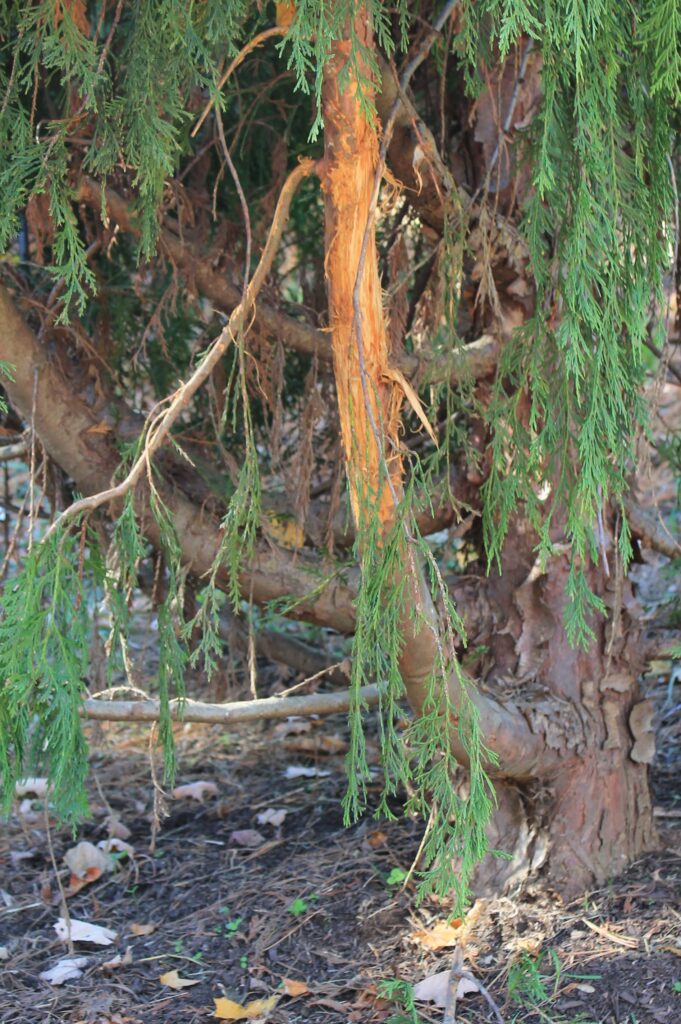Bucks rub their antlers this time of year, so protect your trees from deer damage- whether they’re small or even up to six inches in diameter!
Why do deer damage trees?
Male deer, or bucks, grow antlers, loose the velvety coating on their antlers, and then shed their antlers on a yearly basis. They rub their antlers on low branches or trunks of trees to help remove the velvet in a process known as “buck rub”. This typically coincides with mating season, which can begin as early as September and can last into February. Bucks rub their antlers most intensely just before the peak of this season.
In addition to removing velvet, bucks rub trees occurs to mark their area. A scraping sequence starts with an overhanging limb on which a buck will rub his forehead or preorbital gland. If the mood strikes him, he’ll even rattle the branch with his antlers. Only dominant bucks rub trees large trees, but younger males will still cause damage to small trees.
When bucks rub, their antlers scrape at the outer layer of the tree, damaging the bark and deeper. Not only is this unsightly, but it interrupts the movement of water and nutrients through the plant and in severe cases, can kill the tree.
Therefore, in order to protect your new trees, take action in September before velvet loss. And continue protecting them through December each year.
How do you protect trees from deer damage?
One simple way to protect from buck rub is to place large tomato cages around your young trees. Instead of storing your tomato cages, simply place them around your smaller trees for the fall and winter. By the time you want to use them again, deer will have dropped their antlers for the year. Just make sure the cages do not rub on existing tree branches. This method works well for buck rub, but for deer browse, you may want a more permanent solution.

Another method to reduce buck rub is to use rebar or stakes placed around tree trunks. Three stakes driven into the ground around the tree may be enough to keep deer from rubbing the trunk. Just be careful to avoid the root flare or any major roots as you drive the stake.
Tree tubes or tree shelters are another alternative, and are especially useful on large scale plantings. Purchase shelters and stakes online or at your local hardware store.
If planted close enough together, install fencing around groups of trees and shrubs, instead of each one individually. Black deer fencing and several stakes are not highly visible, and usually enough to deter the deer. Since deer do not like to jump into areas without substantial landing room, fencing smaller areas can be effective, even if the fence is not too high.
Remember to check all tree protection measures in the spring. You can leave them on, or remove and replace them every fall until trees reach approximately 6” in diameter.
Winter damage to trees
After mating season, bucks lose their antlers and are no longer a threat to trees due to rubbing. But when there is less food available, deer eat plants that they do not bother the rest of the year. This occurs especially in winters that have extended periods of snow on the ground. Trees with fragrance or sharp leaves like American Holly, (Ilex opaca) usually keep deer at bay. But during harsh winters they’ll eat almost anything.
It is much more difficult to protect trees when you can no longer hammer stakes into the ground because the ground is frozen. So cage or fence your trees and shrubs now.
Deer can be very problematic in our landscapes, especially in the fall and winter. With preventative measures, you can protect your trees and shrubs from extensive damage.

